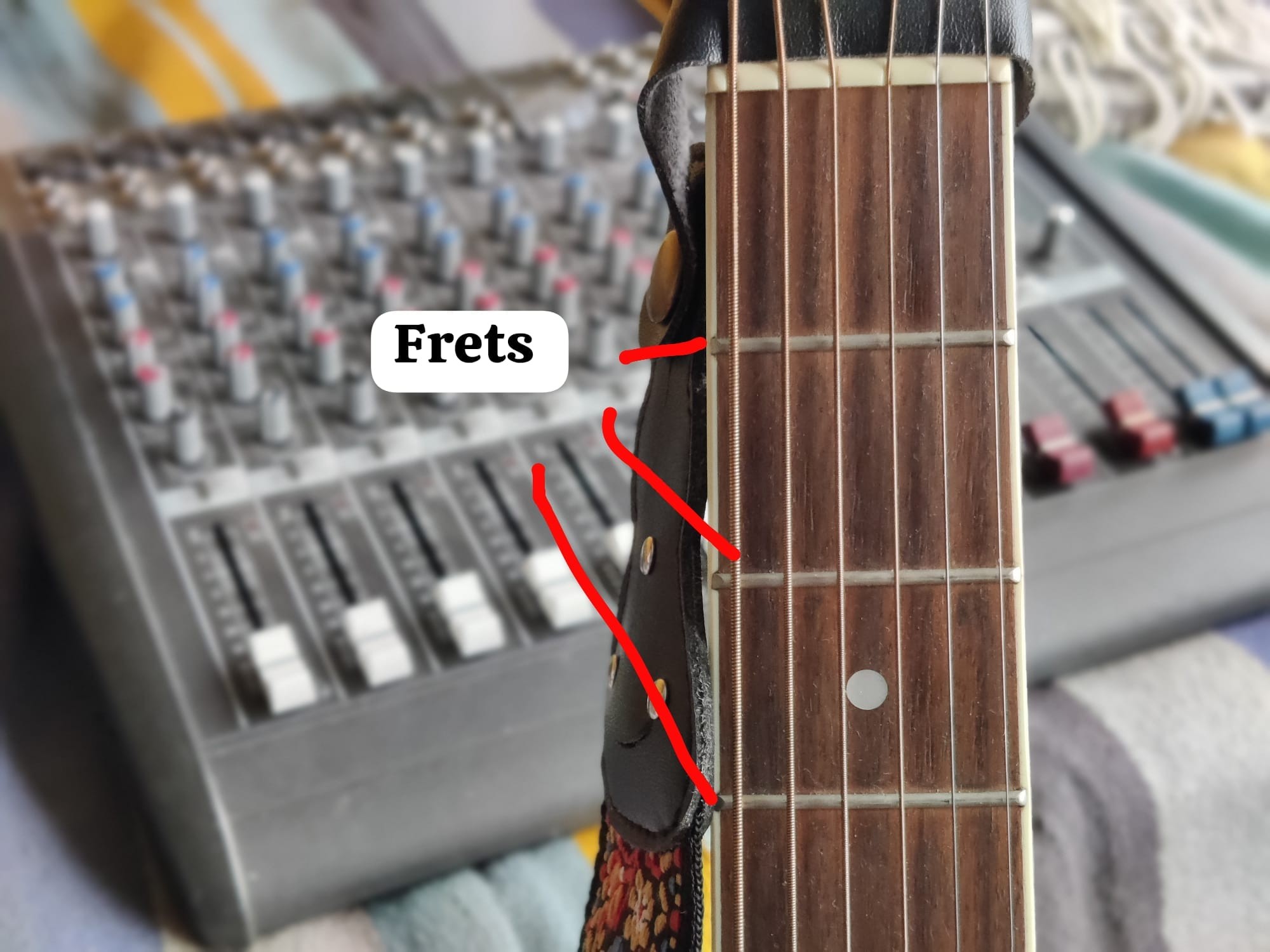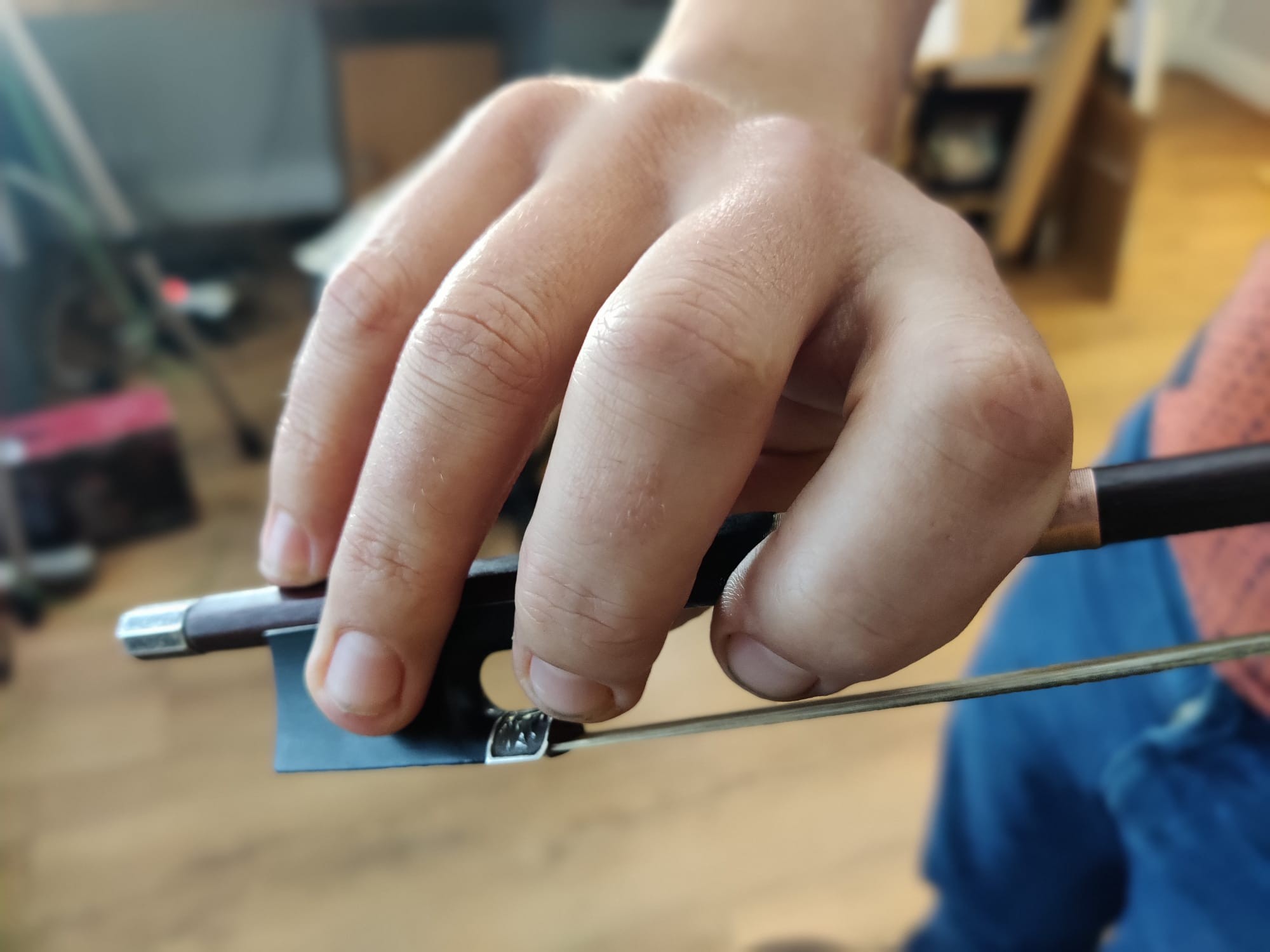Is The Fiddle Difficult To Learn? No, learning the basics of the fiddle isn’t necessarily hard, especially with the right guidance and resources; LEARNS.EDU.VN makes learning approachable and enjoyable. We break down the complexities into manageable steps, ensuring you make melodious music in no time.
At LEARNS.EDU.VN, we believe that mastering the fiddle should be an exciting journey. Let’s explore how you can conquer the fiddle and unleash your musical potential, using effective techniques and resources.
1. Understanding the Fiddle’s Appeal
1.1. Why the Fiddle Captivates Learners
The fiddle, with its rich history and vibrant sound, holds a special place in the hearts of music lovers. But why do so many people find it so alluring?
- Cultural Significance: The fiddle is deeply rooted in various cultural traditions, from Irish folk music to American bluegrass, making it a gateway to rich musical heritage.
- Emotional Expression: Its expressive capabilities allow musicians to convey a wide range of emotions, making it a powerful tool for storytelling.
- Community Connection: Playing the fiddle often involves joining jam sessions and folk groups, fostering a sense of community and shared passion.
1.2. Dispelling Common Misconceptions
Many beginners approach the fiddle with preconceived notions about its difficulty. Let’s address some common misconceptions:
- Myth: It Requires Natural Talent: While talent can be an asset, dedication and practice are more crucial for success. Anyone can learn to play the fiddle with consistent effort.
- Myth: It’s Too Late to Start as an Adult: Age is not a barrier to learning. Adult learners often bring a unique level of focus and discipline to their studies.
- Myth: You Need Perfect Pitch: Perfect pitch is not necessary. Developing relative pitch and a good ear through practice is more important.
2. Addressing the Challenges of Fiddle Playing
2.1. Intonation: The Fiddle’s Unique Hurdle
One of the primary concerns for beginners is achieving accurate intonation, or playing in tune. Unlike fretted instruments like the guitar, the fiddle requires precise finger placement on the fingerboard.
- No Frets: The absence of frets means there are no visual markers to guide finger placement.
- Developing Muscle Memory: Accurate intonation relies on developing muscle memory and a keen sense of pitch.
- Constant Adjustment: Even experienced players make subtle adjustments to their finger positions based on what they hear.
2.2. Bowing Techniques: Mastering the Fiddle’s Voice
Bowing is another critical aspect of fiddle playing. The bow is responsible for producing the instrument’s sound, and mastering bowing techniques is essential for creating a pleasing tone.
- Bow Hold: A relaxed but controlled bow hold is crucial for producing a consistent sound.
- Bow Placement: Keeping the bow parallel to the bridge and maintaining consistent pressure are key to avoiding scratchy or weak tones.
- Bowing Variations: Different bowing techniques, such as détaché, legato, and staccato, create different musical effects and require practice to master.
2.3. Coordinating Left and Right Hands
Fiddle playing demands coordination between the left and right hands, each performing distinct but interconnected tasks.
- Left-Hand Dexterity: The left hand must accurately position fingers on the fingerboard to produce the correct notes, requiring strength, flexibility, and precision.
- Right-Hand Bowing Control: The right hand controls the bow, determining the tone, volume, and rhythm of the music.
- Simultaneous Coordination: The challenge lies in coordinating these two hands seamlessly, requiring practice and concentration.
3. Overcoming the Challenges: Practical Strategies
3.1. Developing Accurate Intonation
To conquer the intonation challenge, consider these strategies:
- Ear Training: Develop your ear by singing scales and arpeggios, and by listening critically to other musicians. Research by the University of California, San Francisco, highlights that regular ear training significantly improves pitch accuracy.
- Tuner Use: Use a tuner to check your intonation regularly, but don’t rely on it exclusively.
- Slow Practice: Practice slowly and deliberately, paying close attention to the pitch of each note.
- Recordings: Record yourself playing and listen back critically to identify areas where your intonation needs improvement.
3.2. Mastering Bowing Techniques
Effective bowing techniques are vital for producing a beautiful sound. Here’s how to improve your bowing:
- Bow Exercises: Practice basic bowing exercises, such as long tones and détaché strokes, to develop control and consistency. The Juilliard School recommends daily bowing exercises to enhance tone and control.
- Mirror Practice: Practice in front of a mirror to ensure your bow remains parallel to the bridge.
- Teacher Feedback: Seek feedback from a qualified teacher who can identify and correct flaws in your bowing technique.
3.3. Enhancing Coordination
Coordination improves with focused practice:
- Scales and Arpeggios: Practice scales and arpeggios slowly, paying attention to the coordination between your left and right hands. Studies from the University of Music and Performing Arts Vienna show that consistent scale practice improves coordination.
- Rhythmic Exercises: Practice rhythmic exercises to develop a steady pulse and improve timing.
- Duets: Play duets with another musician to improve your ability to listen and respond in real-time.
4. Essential Elements for Successful Fiddle Learning
4.1. Choosing the Right Fiddle
Selecting the right instrument is crucial. Consider these factors:
- Size: Ensure the fiddle is the correct size for your body. A too-large or too-small fiddle can hinder your progress.
- Quality: Invest in a quality instrument that produces a good sound. A better-sounding fiddle will inspire you to practice more.
- Setup: Have the fiddle properly set up by a luthier. A good setup can make a big difference in playability.
4.2. Finding a Qualified Teacher
A good teacher can provide invaluable guidance and support. Look for a teacher who:
- Experience: Has experience teaching beginners.
- Patience: Is patient and encouraging.
- Technique: Has a strong understanding of fiddle technique.
- Style: Is knowledgeable in the style of music you want to play.
4.3. Utilizing Online Resources
The internet offers a wealth of resources for fiddle learners:
- Tutorials: Online tutorials can supplement your lessons and provide additional practice material.
- Sheet Music: Many websites offer free sheet music for fiddle tunes.
- Apps: Apps can help you tune your fiddle, practice scales, and improve your ear.
5. Setting Realistic Goals and Expectations
5.1. Breaking Down the Learning Process
Learning the fiddle is a journey, not a destination. Break down the learning process into smaller, manageable goals:
- First Month: Focus on learning basic posture, bow hold, and producing a clear tone on open strings.
- First Three Months: Learn basic scales and arpeggios, and begin working on simple tunes.
- First Year: Aim to learn a repertoire of tunes in your chosen style and develop a solid foundation in technique.
5.2. Managing Frustration and Discouragement
It’s normal to experience frustration and discouragement along the way. Here’s how to manage it:
- Patience: Be patient with yourself and remember that progress takes time.
- Celebrate Small Victories: Acknowledge and celebrate your accomplishments, no matter how small.
- Take Breaks: Take breaks when you feel overwhelmed, and come back to the fiddle with a fresh perspective.
- Connect with Others: Connect with other fiddle players for support and encouragement.
5.3. Embracing the Joy of Music
Ultimately, playing the fiddle should be an enjoyable experience. Focus on the joy of making music and sharing it with others.
- Play for Fun: Set aside time to play for fun, without worrying about mistakes or perfection.
- Join a Group: Join a jam session or folk group to connect with other musicians and share your love of the fiddle.
- Perform: Perform for friends and family to share your music and gain confidence.
6. The Benefits of Learning the Fiddle
6.1. Cognitive and Emotional Benefits
Learning the fiddle offers numerous cognitive and emotional benefits:
| Benefit | Description |
|---|---|
| Improved Memory | Memorizing tunes and musical patterns enhances memory and cognitive function. |
| Enhanced Coordination | Playing the fiddle requires coordination between the left and right hands, improving motor skills and dexterity. |
| Stress Relief | Making music can be a relaxing and therapeutic activity, reducing stress and promoting emotional well-being. |
| Increased Creativity | Learning the fiddle encourages creativity and self-expression, allowing you to explore your musical ideas. |
| Sense of Accomplishment | Mastering the fiddle provides a sense of accomplishment and boosts self-esteem. |



6.2. Social and Cultural Enrichment
Playing the fiddle can enrich your social and cultural life:
- Community: Joining a fiddle group or jam session connects you with like-minded individuals and fosters a sense of community.
- Cultural Appreciation: Learning the fiddle exposes you to various musical traditions and cultures, broadening your understanding and appreciation of the world.
- Performance Opportunities: Playing the fiddle provides opportunities to perform and share your music with others, enhancing your social skills and confidence.
7. Fiddle Styles and Genres to Explore
7.1. Irish Fiddle Music
Irish fiddle music is characterized by its lively rhythms, intricate ornamentation, and emotional depth. Key elements include:
- Reels: Fast-paced tunes with a distinctive rhythmic drive.
- Jigs: Upbeat tunes with a triple meter.
- Hornpipes: Graceful tunes with a dotted rhythm.
7.2. Bluegrass Fiddle Music
Bluegrass fiddle music is known for its improvisational solos, fast tempos, and syncopated rhythms. Key elements include:
- Breaks: Short instrumental solos within a song.
- Double Stops: Playing two notes simultaneously.
- Shuffles: Rhythmic bowing patterns that create a characteristic “shuffling” sound.
7.3. Other Fiddle Styles
Beyond Irish and bluegrass, there are many other fiddle styles to explore:
- Scottish Fiddle Music: Similar to Irish music but with its own distinct melodies and ornamentation.
- Old-Time Fiddle Music: A precursor to bluegrass, characterized by its simple melodies and driving rhythms.
- Scandinavian Fiddle Music: Features unique tunings and melodies.
- Cape Breton Fiddle Music: Known for its driving rhythms and complex ornamentation.
8. Essential Fiddle Accessories and Maintenance
8.1. Must-Have Accessories
To get the most out of your fiddle, consider these essential accessories:
| Accessory | Description |
|---|---|
| Bow | A quality bow is essential for producing a good sound. Look for a bow made from pernambuco wood or carbon fiber. |
| Rosin | Rosin is a sticky substance applied to the bow hair to create friction and produce sound. Choose a rosin that is appropriate for your climate and playing style. |
| Shoulder Rest | A shoulder rest provides support and comfort while playing. Choose a shoulder rest that fits your body and playing style. |
| Tuner | A tuner is essential for keeping your fiddle in tune. Choose a tuner that is accurate and easy to use. |
| Case | A case protects your fiddle from damage during transport and storage. Choose a case that is sturdy and provides adequate padding. |
8.2. Fiddle Maintenance Tips
Proper maintenance is essential for keeping your fiddle in good condition:
- Cleaning: Wipe down your fiddle after each use to remove rosin and dirt.
- Humidity Control: Store your fiddle in a case with a humidifier to protect it from changes in humidity.
- String Changes: Change your strings regularly to maintain good sound quality.
- Professional Checkups: Take your fiddle to a luthier for regular checkups and maintenance.
9. Advanced Techniques to Elevate Your Fiddle Playing
9.1. Ornamentation Techniques
Ornamentation techniques add flair and expression to your playing:
- Grace Notes: Quick, embellishing notes played before a main note.
- Slides: Gliding from one note to another.
- Trills: Rapid alternation between two notes.
- Vibrato: A subtle oscillation of the pitch, adding warmth and expression.
9.2. Improvisation Techniques
Improvisation allows you to create your own musical ideas:
- Scales and Modes: Use scales and modes as a foundation for improvisation.
- Chord Tones: Emphasize chord tones in your solos to create a strong harmonic connection.
- Licks and Patterns: Develop a repertoire of licks and patterns to use in your improvisations.
9.3. Ensemble Playing
Playing in an ensemble is a rewarding experience:
- Listening: Listen carefully to the other musicians and adjust your playing accordingly.
- Blending: Blend your sound with the other instruments to create a cohesive ensemble sound.
- Dynamics: Pay attention to dynamics and balance your volume with the other musicians.
10. Resources for Continuing Your Fiddle Journey with LEARNS.EDU.VN
10.1. Online Courses and Tutorials
LEARNS.EDU.VN provides extensive online courses and tutorials tailored for all skill levels. Benefit from structured lessons, expert guidance, and personalized feedback to accelerate your learning curve.
10.2. Community Forums and Support
Connect with fellow fiddle enthusiasts through our community forums. Share your progress, ask questions, and receive support from experienced players and instructors.
10.3. Personalized Learning Paths
LEARNS.EDU.VN offers personalized learning paths designed to meet your unique goals and preferences. Whether you aspire to master Irish fiddle, bluegrass, or any other genre, our platform adapts to your individual needs.
10.4. Expert Insights and Tips
Access exclusive articles, videos, and resources featuring insights from renowned fiddle players and educators. Enhance your knowledge and skills with practical tips and advanced techniques.
FAQ: Your Fiddle Learning Questions Answered
1. Is it hard to learn the fiddle if I have no musical background?
No, it’s not necessarily hard. While having some musical background can be helpful, it’s not essential. With the right guidance and consistent practice, anyone can learn to play the fiddle.
2. How long does it take to become proficient at playing the fiddle?
Proficiency varies from person to person, but with consistent practice, you can start playing simple tunes within a few months. Achieving a high level of proficiency can take several years of dedicated practice.
3. What is the best age to start learning the fiddle?
There’s no best age to start learning the fiddle. Children and adults can both learn successfully. Younger children may benefit from smaller-sized fiddles designed for their size.
4. Can I teach myself to play the fiddle?
Yes, you can teach yourself to play the fiddle using online resources, tutorials, and instructional books. However, working with a qualified teacher can provide valuable guidance and feedback.
5. What are the most common mistakes beginners make when learning the fiddle?
Common mistakes include poor posture, incorrect bow hold, inaccurate intonation, and rushing through the learning process. Addressing these issues early on can help you progress more effectively.
6. How important is ear training for learning the fiddle?
Ear training is crucial for developing accurate intonation and a good sense of pitch. Regular ear training exercises can significantly improve your ability to play in tune.
7. What is the best way to practice the fiddle?
Effective practice involves setting specific goals, breaking down complex passages into smaller chunks, practicing slowly and deliberately, and recording yourself to identify areas for improvement.
8. What are some essential fiddle accessories I should invest in?
Essential accessories include a quality bow, rosin, shoulder rest, tuner, and case. Investing in these items can enhance your playing experience and protect your instrument.
9. How often should I practice the fiddle?
Consistency is key. Aim to practice at least 30 minutes to an hour each day. Regular, shorter practice sessions are often more effective than infrequent, longer sessions.
10. How can I find a qualified fiddle teacher?
Look for a teacher who has experience teaching beginners, a strong understanding of fiddle technique, and a patient and encouraging demeanor. Online directories and music schools are good places to start your search.
Learning the fiddle is a rewarding journey filled with musical discovery and personal growth. With the right approach, resources, and dedication, anyone can unlock their musical potential and experience the joy of playing the fiddle. Embrace the challenges, celebrate the victories, and let the music guide your way.
Ready to start your fiddle journey? Visit learns.edu.vn today and explore our comprehensive courses, expert guidance, and supportive community. Contact us at 123 Education Way, Learnville, CA 90210, United States or Whatsapp: +1 555-555-1212. Let’s make music together!
